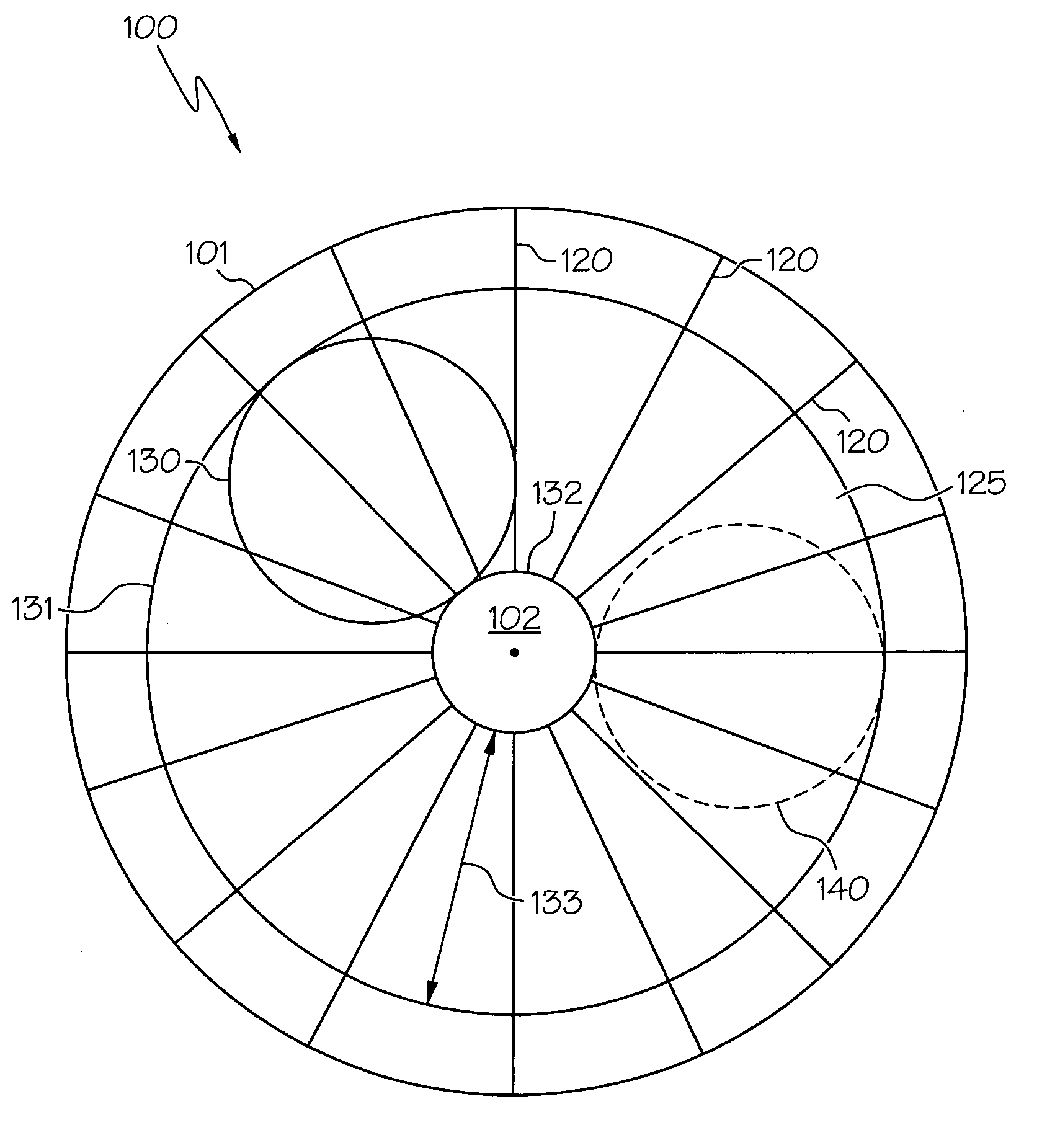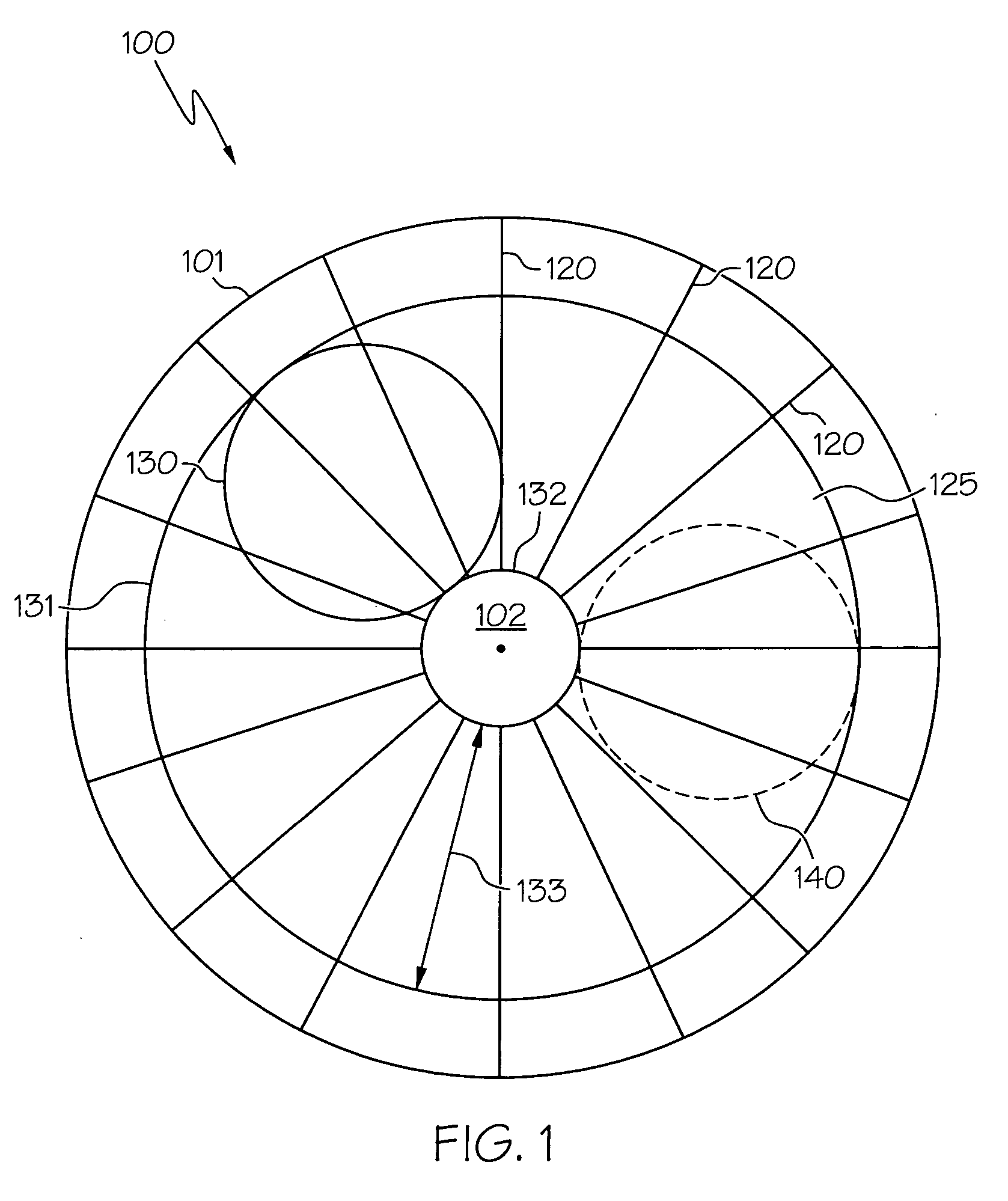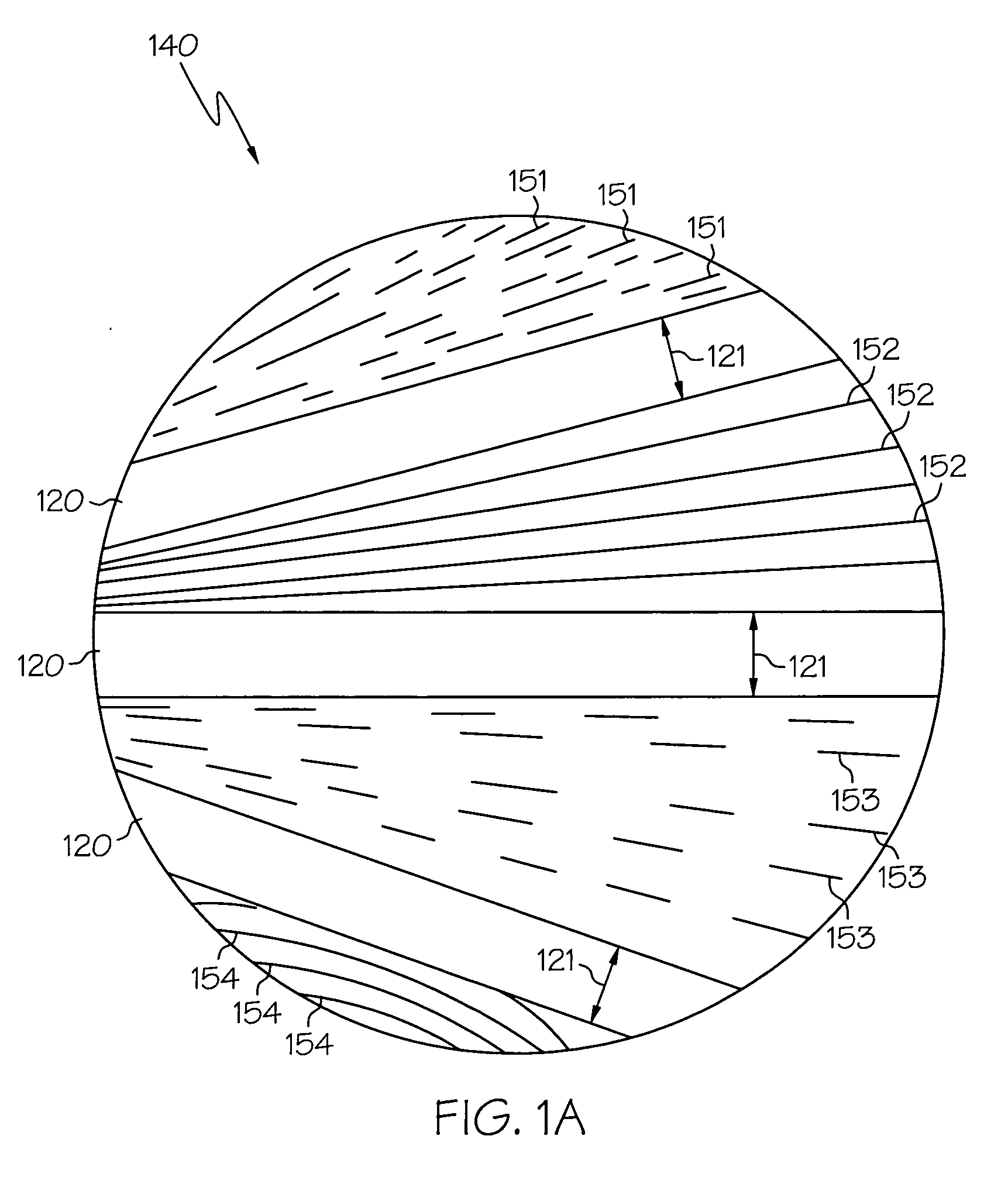Radial-biased polishing pad
- Summary
- Abstract
- Description
- Claims
- Application Information
AI Technical Summary
Benefits of technology
Problems solved by technology
Method used
Image
Examples
Embodiment Construction
[0024] The invention relates to polishing pads having a macro- and micro-texture that reduces groove pattern transfer effects on the resulting polished substrate. It has been discovered that radial conditioning can reduce surface non-uniformities on magnetic, optical and semiconductor substrates. For purposes of this specification, radial direction refers to a path within 60 degrees of a straight line from the center to the circumference of the polishing pad (“radial direction”). Preferably, the micro-channels are within 45 degrees and most preferably within 30 degrees of the radial direction. The radial micro-channels produced by conditioning can facilitate outward slurry distribution that can reduce under-polished regions associated with the groove pattern transfer phenomena. Typically, the greater percentage of micro-channels with a radial direction, the less under-polished regions result from the polishing. For purposes of this specification, a majority of radial-biased micro-ch...
PUM
| Property | Measurement | Unit |
|---|---|---|
| Length | aaaaa | aaaaa |
| Angle | aaaaa | aaaaa |
| Area | aaaaa | aaaaa |
Abstract
Description
Claims
Application Information
 Login to View More
Login to View More - R&D
- Intellectual Property
- Life Sciences
- Materials
- Tech Scout
- Unparalleled Data Quality
- Higher Quality Content
- 60% Fewer Hallucinations
Browse by: Latest US Patents, China's latest patents, Technical Efficacy Thesaurus, Application Domain, Technology Topic, Popular Technical Reports.
© 2025 PatSnap. All rights reserved.Legal|Privacy policy|Modern Slavery Act Transparency Statement|Sitemap|About US| Contact US: help@patsnap.com



